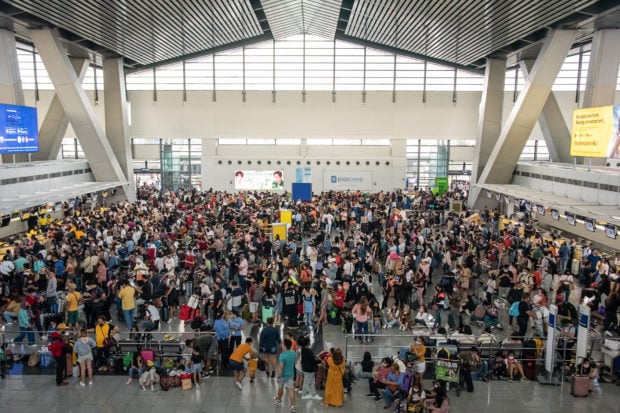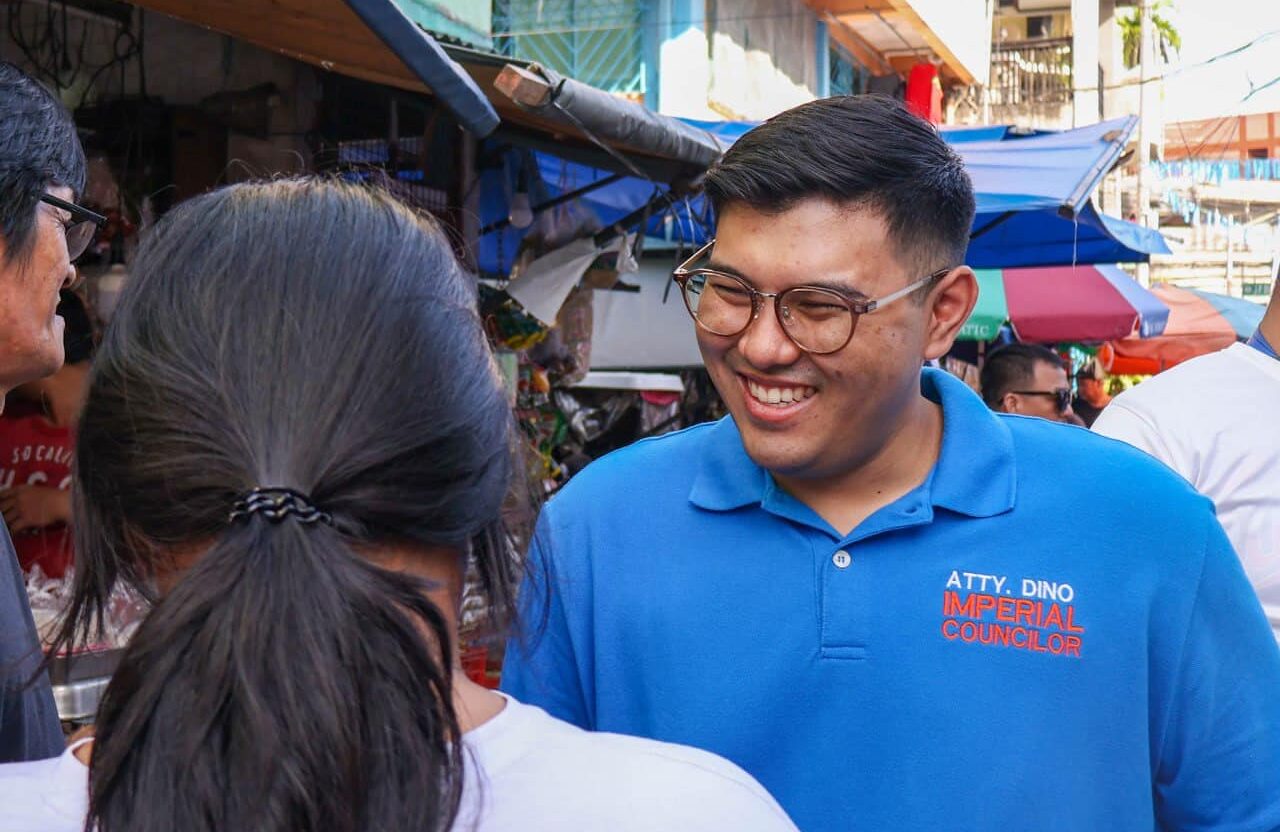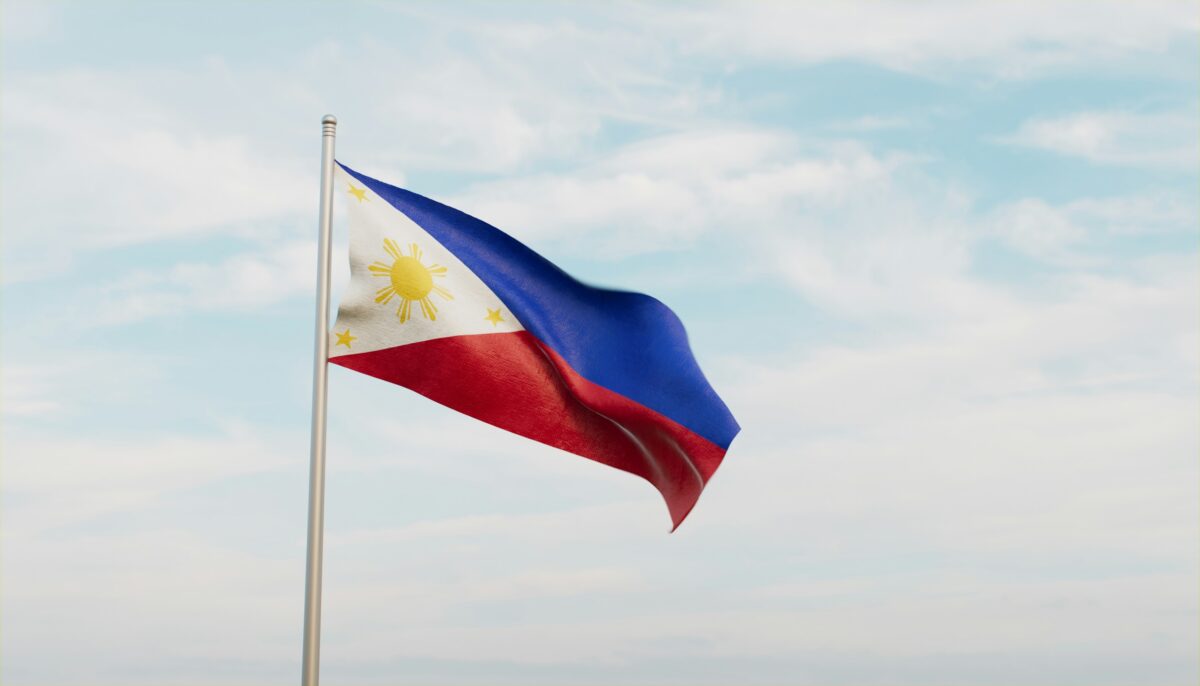Ladies and gentlemen, we were told that the whole Philippine air space is down and [airport officials] already canceled departing flights out of Naia (Ninoy Aquino International Airport),” the pilot told passengers over the airplane’s public address system. It was early afternoon of New Year’s Day, and Philippine Airlines flight PR427 bound for Manila was waiting at the hangar of Narita International Airport for more than an hour.
The pilot said he was still uncertain about whether our flight will go as planned. “As of the moment, Manila is unable to accommodate arriving flights … We will update you in 30 minutes.”
“At least they are offering us water,” the guy in front of me muttered.
Our family was flying black to Manila after spending a holiday vacation with my Tokyo-based firstborn. The weather in Japan was biting cold, the sushi fresh and our cameras were filled with photos of our first postpandemic furlough.
We expected to arrive in Naia by late afternoon so there would be enough time to wind down and have a relaxing dinner back home.
In about half an hour, the pilot spoke again. This time, his voice was tense.
“The flight will have to be rescheduled,” he said. “As of now, please start disembarking. Please bring all your belongings and rest assured, the ground staff will take care of your concerns. Please understand that this is not our fault. Hope to see you soon. Thank you. God bless.”
No further explanation was given and immediately there was confusion. Was he serious? Are we really leaving the plane?
A stewardess raised her hand and announced that all passengers who purchased duty-free items must return them to the stores where they were purchased. The passengers will get a refund, she said. Japan airport and immigration authorities will be on hand to assist everyone, the stewardess added.
Patience
Narita airport staff were admirable in their patience. Despite the language barrier, they obviously tried their best to assist the passengers and answer questions as best they could.
After all passengers who bought duty-free items refunded their purchase, we were supposed to gather in one spot and be led to immigration to have our passports stamped. Then on to the carousel where our check-in luggage would be waiting.
What happened next was a blur of brisk walking from one shop to another, queueing in front of cashiers, explaining that our flight was cancelled, apologies and sympathetic looks.
There were at least two Luzon-bound flights in Terminal 3 of Narita airport while we were there. Imagine the volume of passengers lining up in duty-free shops for refunds.
We took some time returning to the meet-up spot in the duty-free area, so we missed the airport staff who escorted passengers to immigration.
We decided to return to the gate where we disembarked from PR427 to see if there were still passengers on their way to immigration. On our way there, we passed by a group of Cebu Pacific passengers whose flight was also cancelled.
The gate that handled PR427 was already accepting passengers for another flight. It took some lucky queries with random airport personnel for us to put together that the passengers we were with were already queuing in an immigration booth in a distant part of the building. As we rushed toward that booth, we passed by a huge airport window. I noticed that it was already dark.
There were hardly any questions as we surrendered our passports. Next stop was the baggage carousel where entire families huddled as everyone discussed their Plan B. I was relieved to see that airport personnel who handled our luggage already grouped them together.
“Kanya-kanya daw na rebooking,” an offloaded female passenger told us. She said those who they asked (PAL? Narita officials? It was not clear) only explained that the airline could not be held liable for the cancelled flight since what was happening in Manila was “not its fault.”
Nobody said anything about hotel accommodations. And there were no airline representatives we could approach to ask questions.
Family trips
A female netizen who has been following my real time tweets about our cancelled flight reached out to me on Twitter. She was on the same flight and had been checking PAL’s website. She said she could not find an available flight that night. All flights the next day were also fully booked, she added.
“I have two children with me and we have to leave the airport because they are getting restless,” she explained.
True enough, almost all the Filipino-speaking groups in the area where we were had both small children and elderly members. After all, we were all on family trips to Japan.
We awkwardly exchanged news about what’s happening back home. The byword that time was “technical glitch.”
My husband Brian called our travel agent while the rest of us freshened up. The agent said flights on Jan. 2 and 3 were still iffy, but he promised to book us on whatever flight is available.
Everyone was already tired at this point, so we thought it would be smarter to book a hotel back in Tokyo. It was already 8 p.m. when the agent called and asked us to proceed to Shinjuku. Our party of five will occupy two rooms. We took two taxis back to the city. Both taxi meters ran up to around 13,000 yen (about P5,700).
We were supposed to stay in Tokyo for only six days. The disruption of flights on New Year’s Day forced us to stay three days more.
Our travel agent later told me that around 2 a.m. of Jan. 2, he was able to get a free rebooking for a 10 a.m. flight later that day. “But I was thinking that everyone was already tired and asleep so I looked for another flight,” he explained. Eventually we were able to book an afternoon flight via Air Nippon Airways (ANA) on Jan. 4.
PAL, the travel agent said, has an airline alliance partnership with ANA that allows ANA to accommodate displaced PAL passengers. It was considered our second rebooking since we did not avail of the Jan. 2 flight. The travel agent charged us a “fare difference” of P33,000 per person.
(During the hearing of the Senate committee on public services last Thursday, chair Sen. Grace Poe noted that the Air Passenger Bill of Rights includes full reimbursement in case of flight cancellation, food and beverages, rebooking, refunding, free phone calls/texts/emails, first aid and endorsement to another carrier in case of flight delay among a passenger’s rights.)
‘Wala pong accountability’The travel agent noted that the Jan. 1 flight disruption was the first of its kind that he experienced. He said none among the airlines whose flights got cancelled that time were held accountable for their failure to transport passengers due to the glitch.
“Wala pong accountability lahat ng airlines because this was CAAP’s (Civil Aviation Authority of the Philippines) fault,” he said.
During the Senate hearing, CAAP officials remained clueless about the root cause of the flight disruption that affected 65,000 passengers worldwide. Poe enumerated CAAP’s explanations—from the original technical glitch to an outdated air traffic navigator system, to overvoltage and a faulty circuit breaker—in her opening statement.
Friends and relatives ribbed us on social media, saying ours was “a nice problem to have” since more days in Tokyo would be fun.
Yes and no.
We were out of clean clothes. The hotel bathroom became a drying area for newly washed underwear. Since the temperature hovered around 10 degrees during our stay, we were confident that none of our clothes smelled.
I had to email my youngest child’s teacher adviser to explain why she cannot attend the face-to-face classes until we return. And explain to another teacher why my child could not submit an assignment.
At one point, I was really worried about running out of cash and credit limit. I asked work mates if I could use the ATM card that receives my salary as a debit card. But the food, oh, the food! If only for that, there was no other place I’d rather get stranded in.












































